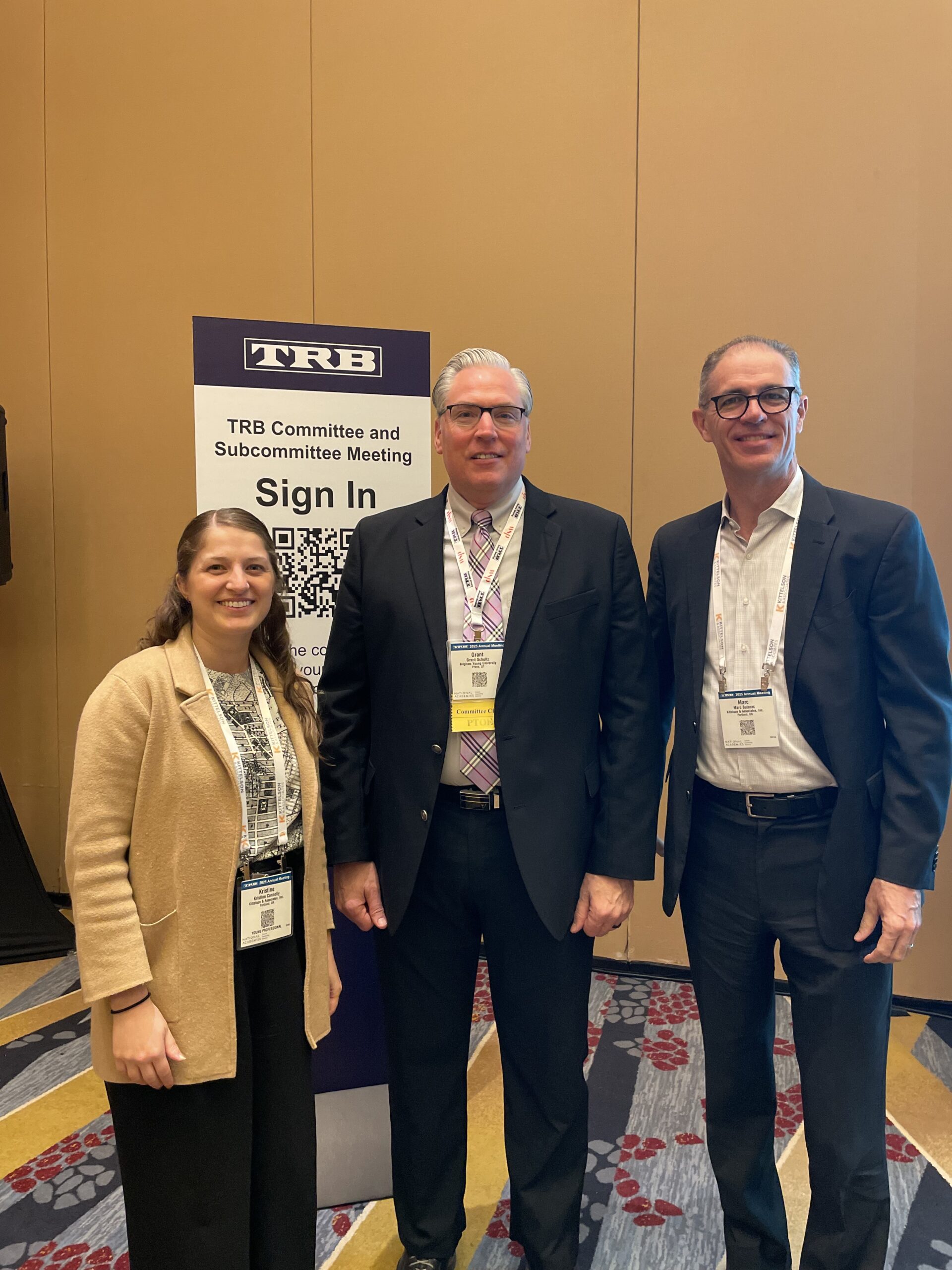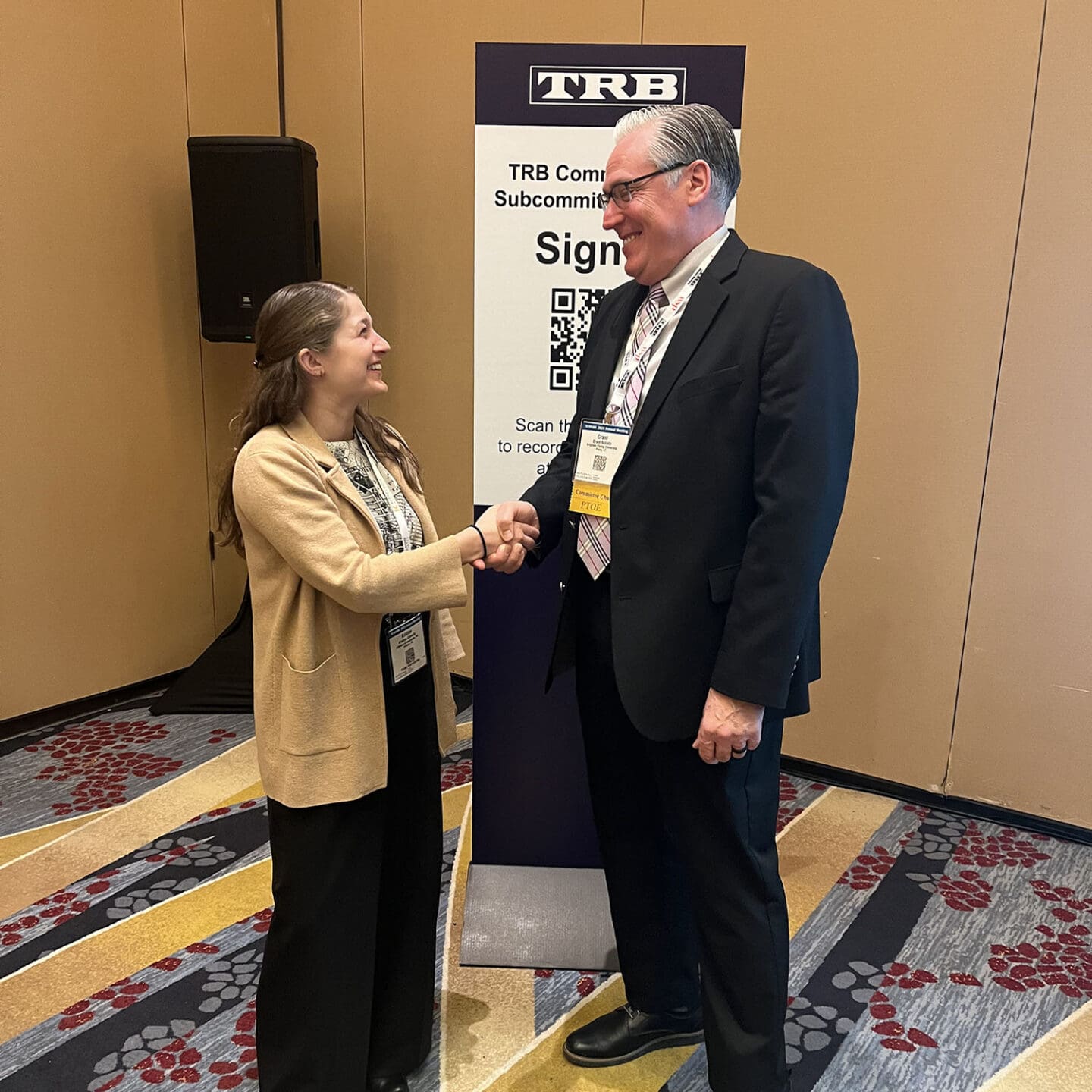“I see firsthand how thoughtful access management strategies can lead to better outcomes for businesses and communities.”
We’re an interconnected nationwide team, but we each have our own reasons for being passionate about the work we do. This month, get to know Kristine Connolly, associate engineer in our Portland office.
 Kristine has been selected as the next chair of the Transportation Research Board (TRB) Committee on Access Management, a role that reflects her expertise and leadership in the field. TRB is made up of over 170 technical committees, each dedicated to advancing research and best practices across all modes of transportation. Serving as a committee chair is a significant achievement, requiring years of dedication, volunteer contributions, and recognition from national peers. As she steps into this role, Kristine will help guide research efforts and industry discussions on access management.
Kristine has been selected as the next chair of the Transportation Research Board (TRB) Committee on Access Management, a role that reflects her expertise and leadership in the field. TRB is made up of over 170 technical committees, each dedicated to advancing research and best practices across all modes of transportation. Serving as a committee chair is a significant achievement, requiring years of dedication, volunteer contributions, and recognition from national peers. As she steps into this role, Kristine will help guide research efforts and industry discussions on access management.
How did you first get involved in access management and the TRB Access Management Committee?
When I joined Kittelson in 2016, I was immediately immersed in access management through two major projects: NCHRP 03-120, which focused on multimodal access management strategies, and the update of the National Highway Institute (NHI) courses on access management. Marc Butorac, a longtime leader in this space, brought me into these efforts, and I quickly developed a deep appreciation for the role access management plays in safety, mobility, and economic development. My involvement in these projects connected me with national experts and TRB committee members, including Chris Huffman and Kristine Williams, and that led me to start attending TRB meetings, volunteering for committee efforts, and taking on leadership roles. Over the years, I’ve served as Outreach Subcommittee Chair, then Secretary, and now, I’m honored to step into the role of Committee Chair.
What sets the TRB Access Management Committee apart, and what excites you most about leading it?
One of the most exciting aspects of this committee is its strong focus on outreach beyond the transportation industry. We work not only with transportation practitioners but also with policymakers, developers, and other stakeholders to communicate the benefits of access management in a way that resonates with them. There’s often a misconception that access management is restrictive, but in reality, it plays a key role in improving safety and supporting successful developments. As someone who frequently works with developers and agencies, I see firsthand how thoughtful access management strategies can lead to better outcomes for businesses and communities. I’m looking forward to helping the committee further its efforts to “rebrand” access management as a critical tool for multimodal safety and mobility.


What does being selected as chair of the committee mean to you?
It’s an incredible honor to be recognized by my peers for this leadership role. Access management influences so many aspects of transportation, yet it often flies under the radar. This position gives me the opportunity to help shape the future of access management by advancing research, supporting practitioners, and ensuring that the field continues evolving to meet the needs of all roadway users. It also allows me to stay closely engaged with the latest developments and bring those insights back into my own work at Kittelson.
What are some of the key initiatives you’ll be focusing on as chair?
A major priority is securing support and funding for the next update of the Access Management Manual, which serves as a foundational resource for practitioners. There’s been significant new research since the last edition, and we’re looking at ways to modernize the format to make it more accessible and user-friendly. Another focus is expanding our research on how access management intersects with multimodal planning and curb management, particularly in urban environments where space is limited. Additionally, through implementation efforts like NCHRP 20-44(56), we’re working on better ways to help practitioners measure and communicate the value of access management to decision-makers.
What advice would you give to someone looking to get involved in TRB or committee leadership?
Show up, be curious, and volunteer! Many of the leadership opportunities at TRB come from simply being engaged—attending meetings, asking questions, and offering to help where you can. If people see that you’re proactive and reliable, they’ll want you on their team. TRB is an incredible space to connect with industry leaders, contribute to meaningful research, and help shape the future of transportation.
